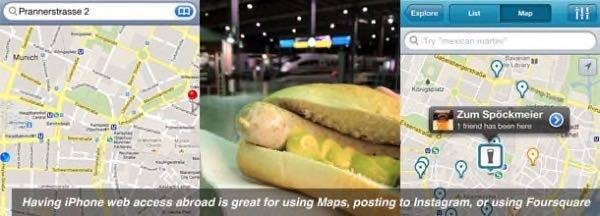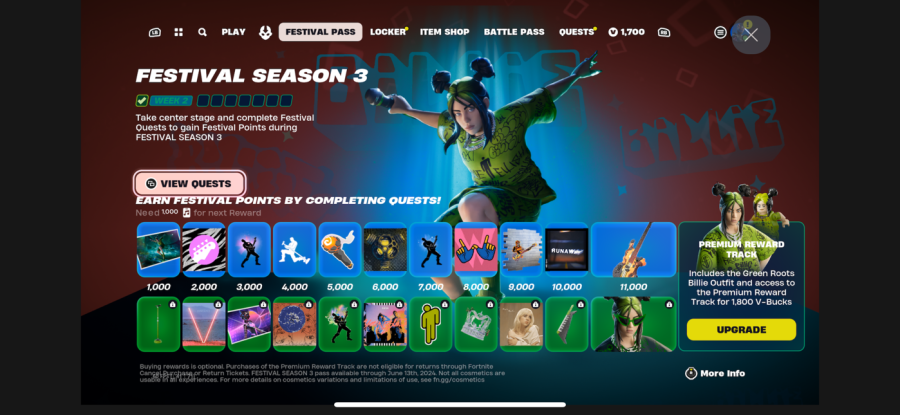
After using a smartphone for years, the mobile Internet becomes so engrained in your life that you don’t realize how much you rely on it until it’s not there. Business and pleasure travel overseas, for example, are prime occasions where mobile web access can even be more useful than at home. But in the past, that access has been prohibitively expensive.
The good news is that as smartphone popularity increases, it’s getting cheaper to get online abroad. International data roaming is getting more affordable, and depending on your phone and carrier, there are even more options to get online. Here are some tips.
iPhone Abroad: Why It’s Awesome
While it is nice to be offine for a while, especially on vacation, having an iPhone (or any smartphone) with mobile Internet access is an incredible help. This is especially true for business travel: Having now traveled with an active iPhone overseas for business, I’d never want to do it without one.
Specifically, the ability to use maps with GPS, get directions (walking and public transit), find restaurants using tools like Foursquare Explore, search Google to translate words, and stay in touch with people via e-mail, iMessage, and WhatsApp, is all nothing short of amazing.
Your time is extremely precious while traveling abroad, and having a smartphone with Internet access can save enough time to quickly pay for itself. Your hotel, convention center, and airport will probably have wi-fi, yes. But having 3G web access while walking around is now frequently worth the expense.

How to Get Online Overseas
This information changes relatively frequently, so please check with your mobile operator first, before you leave your home country. This is generally true for most smartphones, but I’m using the iPhone and U.S. carriers as examples, as I’m most familiar with them. Your situation may vary, so please research this yourself, too.
Important note: If you’re going to use your carrier’s international roaming, it’s important to get a special international data subscription/package. If you don’t have one, you’ll be charged exorbitant rates that, frankly, should be illegal. Be careful and don’t mess this up.
Verizon Wireless: Of the U.S. iPhone 4S carriers, Verizon Wireless currently has the best deal for international data roaming. Starting April 23, Verizon now offers 100 MB of overseas data for $25, and subsequent 100 MB “buckets” for an additional $25 each. The last couple times I’ve traveled on business overseas, I’ve used about 300 MB of data over the course of a week. That would cost me about $75 at Verizon, which is pretty good. (Especially relative to the overall cost of a trip.)
If you have an iPhone 4S and a Verizon account that has been active and in good standing for 60 days, you can also call Verizon and ask it to unlock your SIM card slot, which would allow you to purchase data service from a local carrier. More on this in a bit.
AT&T: AT&T also offers data “buckets” for overseas roaming, starting at $25 for 50 MB of data (half as much data as Verizon). You can also get 125 MB for $50, 275 MB for $100, and 800 MB for $200, each with $10/10 MB overage charges. These are less expensive than they used to be, but they’re still expensive. Only at 800 MB of usage will you reach the price/megabyte level as Verizon now offers. If you’re locked to AT&T – the case for most U.S. iPhone owners – this isn’t a terrible option, as you can activate them directly from the “myAT&T” iPhone app and save time.
I expect AT&T to add more data to these plans eventually, making them a better deal. Get in touch with your AT&T rep to discuss the nuance of these plans, as they may be pro-rated over the time you need them. And AT&T now unlocks old iPhones that are no longer under contract, after you’ve finished paying off your subsidy. That may also be a good option.
Sprint Nextel: Sprint does not appear to offer any money-saving plans like these, instead charging an absurd per-megabyte rate. Avoid this unless absolutely necessary. But Sprint is also apparently willing to unlock your iPhone if your account is in good standing. Check with your Sprint rep for details and requirements.
Once you have landed overseas and have an international roaming package activated, you should be able to power up your phone and get online. If it doesn’t work, contact your home carrier.
Unlocked iPhone: The Cheapest Service
If you’ve purchased an unlocked iPhone from Apple (expensive, but potentially worth it, if you travel a lot); have had your iPhone 4S SIM slot unlocked by Verizon or Sprint; have an old, unlocked AT&T iPhone; or have used an unofficial unlocking service, you can often purchase inexpensive, prepaid iPhone data service from local carriers. There are some drawbacks, including the amount of time it takes to find and purchase one, plus potential language-barrier issues. But if you do have an unlocked phone, and want an adventure, this can be fun and can help save money.
For example, in Germany this year, when I was visiting Munich and Berlin, I was easily able to get a SIM card from Vodafone with “unlimited” data service for €20. (The clerk used a SIM cutter to make it fit in my iPhone.) In Spain, while I was attending Mobile World Congress, I got a prepaid micro-SIM with Orange service for €3.50 per day. Both times, I walked into a mobile phone store (in busy areas, where they might expect foreigners), found a store representative that spoke enough English to figure out the best option, and paid cash for prepaid service. Both times, they needed my passport. But once the service was activated, it was reliable the entire time I was traveling. This wound up being significantly less expensive than if I were to use AT&T’s roaming service.
But there was one big drawback: In Europe, in particular, it seems, prepaid “unlimited” data plans have low caps for full-speed service. After 200-250 MB of blazing fast 3G access, in both countries, my speeds were cut to a very slow 64 kbps. It was like going from an amazing broadband connection to dial-up. The Internet still worked, and low-bandwidth activities like Twitter, Foursquare, and e-mail were fine. Upstream bandwidth was, oddly, uncapped, so I could still upload photos to Instagram very quickly. But downloading photos and using Facebook or the web became tragically slow. Streaming video was a no-go. Be mindful of this limitation when choosing a provider or plan, and try to look this stuff up before you travel, so you can show up to a store knowing what you want ahead of time.
There are also third-party “roaming” providers that will sell you a SIM card and international roaming service, and require unlocked phones. These include MaxRoam, whose service I tested in Spain, and it was fine. But they are often much more expensive than using a local operator.
Getting Better All The Time
As smartphone penetration grows around the world, expect these options to improve: Pricing, the ease of acquiring service, and the usefulness of mobile Internet services overseas. But if you do have the opportunity to travel with an active smartphone, try it out. You’ll find it’s a wonderful addition to your trip. (And if you’re on vacation, stay away from your work e-mail!)
Also: Fast Times In East Berlin: Exploring Europe’s New Startup Capital










